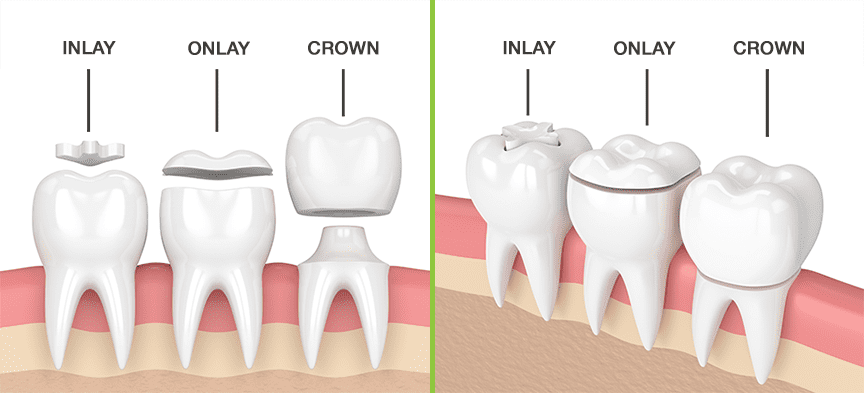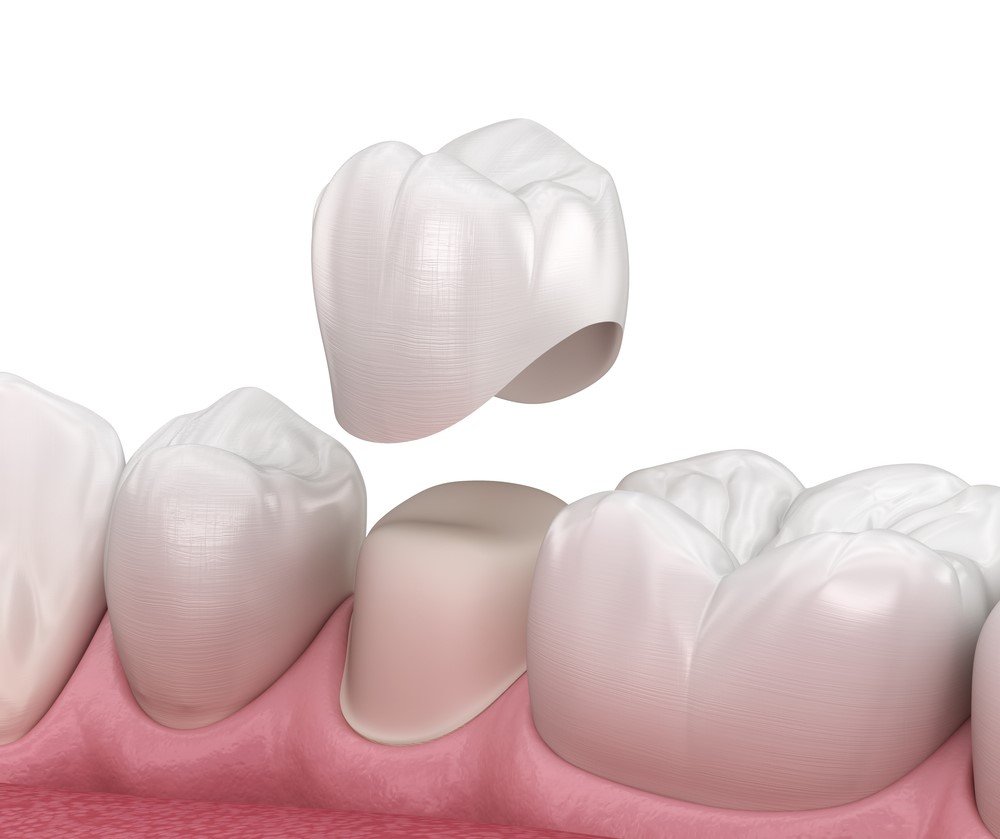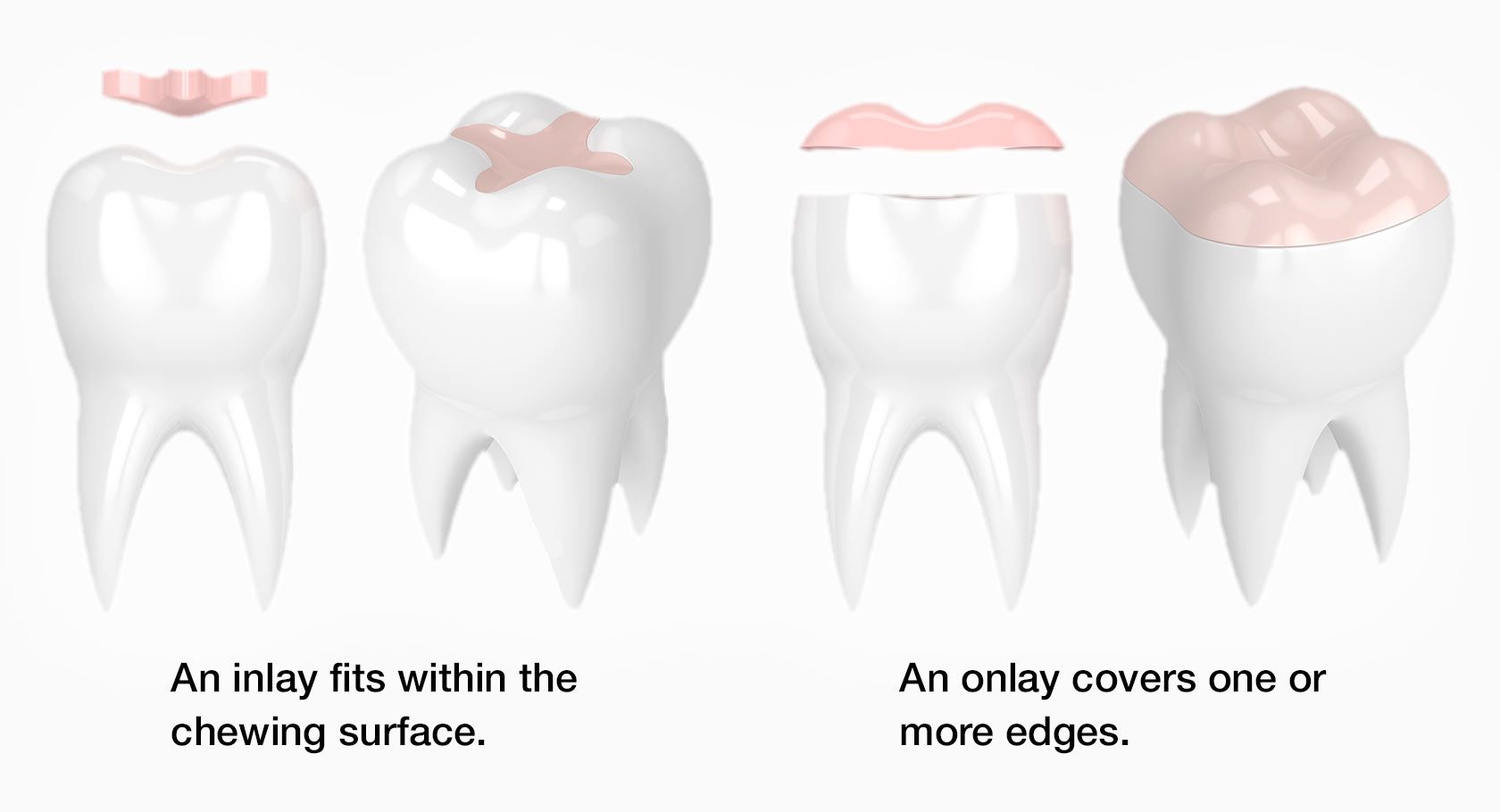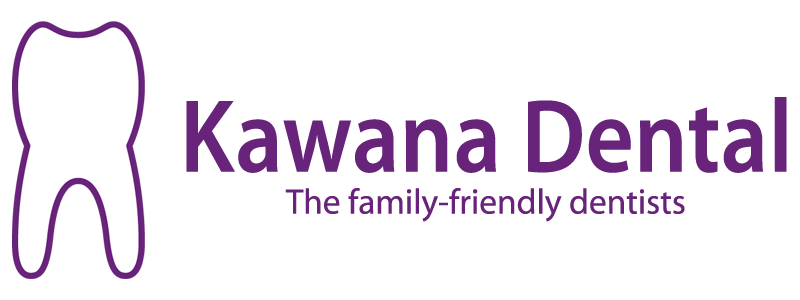Crowns are generally much stronger and longer lasting than fillings.

What are they?
When a tooth is heavily filled, had root canal treatment, is badly broken or at risk of fracturing, a crown can rebuild it to good long-term function.
A crown fits over the existing natural tooth and replaces the natural crown, the part of the tooth seen above the gums.
At Kawana Dental we have the latest technology ‘Cerec Machine’ enabling us to mill high quality crowns at the practice in a single dental visit meaning not waiting multiple weeks for your crown to be made at an external laboratory.
We also have carefully selected a high level local Australian ceramist and laboratory located in Buderim to make our crown and bridge work. This ensures the highest quality materials and workmanship are used, as opposed to sending lab work overseas to places like China.

Different types of crowns.
Crowns can be made from different types of materials depending on what we want to achieve. The newer types of ceramic such as zirconia or lithium disilicate can be both very strong and very aesthetic.
Gold crowns do not look natural, but have properties that can make them them an excellent choice and are extremely long lasting. They are the best choice for very high stress situations like the very back teeth.
Construction of an onlay or crown involves 3 stages.
- Preparation of the remaining structure of the tooth to provide a sound base to “cap” or “shoe”
- A digital scan or impression is taken and a temporary crown is made for protection of the tooth while the final onlay/crown is constructed.
- Bonding or cementation of the lab constructed tooth (usually 1 to 3 weeks, depending on the type)
The key to long lasting teeth is strengthening weakened or cracked teeth before they split in an unrestorable way through the root or under the gum.
Cracks also can sometimes unfortunately extend into the pulp or “nerve”, causing the tooth to become “non-vital”(i.e dead). The non-vital pulp will need to be removed and replaced with inert material. This is called Endodontic or Root canal treatment.
Bridges.
Bridges replace one or more missing teeth.
They consist of an artificial tooth anchored to the natural teeth on each side of the gap. If a tooth is lost through an accident, or is too badly decayed to save with a crown, a bridge may be the treatment of choice. You can also ask your dentist about implants, which are another way of replacing missing teeth.
The steps in preparation and fitting a bridge are similar to those for a crown. The teeth on either side of the gap are shaped in order to fit crowns over them. Crowns and bridges require regular flossing and brushing, with extra attention around the margins where decay is more likely. Special devices including floss threaders and “superfloss” are available for cleaning under bridges.

Onlays.
Onlays can be made to replace medium to large sized fillings and can be more conservative than a full crown.
They can be made of gold or porcelain.
Inlays/Onlays feel very natural and smooth The materials are very stable and biologically neutral.
They are more expensive than fillings initially, but last longer.
Onlays are a more extensive repair that covers the tooth cusps. Cracked teeth are now becoming more common as we try to keep our teeth longer. An onlay puts a cap, like a thimble over the weakened structure. It is much stronger than any simple filling and actually increases the strength of the tooth.

FAQs
For crowns and onlays
Why can’t I just have a filling?
Fillings can be made from various materials and are good for fixing decayed sections of a tooth where “cavities” have occurred. They are not good for repairing cracks, broken cusps, extensive decay, or severely damaged old fillings. There has to be enough of the natural tooth left to support a filling. If not, a crown or onlay is typically the only answer.
I have been told that I have a defective filling and need to have a crown or onlay. My tooth doesn’t hurt. Why bother?
Basically it’s a strength issue. If you have been recommended a onlay or crown it’s because the remainder of the tooth is at risk of breaking…. possibly unrepairably (i.e would require extraction).
The aim of the crown or onlay is to protect the remaining tooth structure and avoid losing the tooth.


